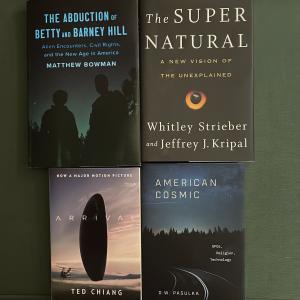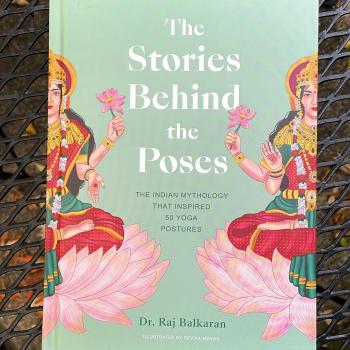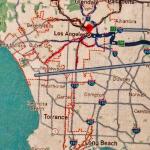 This summer, when I was planning my sermon topics for the year, I stumbled upon an intriguing social media post from Matthew Bowman, a professor of religion and history at Claremont Graduate University. He was promoting his new book The Abduction of Betty and Barney Hill: Alien Encounters, Civil Rights, and the New Age in America. It’s significant to highlight that this book was published by the prestigious Yale University Press. This instance is one of many examples we will consider that persuade me that, whatever is happening around aliens, UFOs, and UAPs is increasingly being taken seriously at the highest levels.
This summer, when I was planning my sermon topics for the year, I stumbled upon an intriguing social media post from Matthew Bowman, a professor of religion and history at Claremont Graduate University. He was promoting his new book The Abduction of Betty and Barney Hill: Alien Encounters, Civil Rights, and the New Age in America. It’s significant to highlight that this book was published by the prestigious Yale University Press. This instance is one of many examples we will consider that persuade me that, whatever is happening around aliens, UFOs, and UAPs is increasingly being taken seriously at the highest levels.
The part of Bowman’s social media post that really enticed me said: “Come for the crop circles, stay for the Unitarians.” Clearly I had to read this book.
On September 19, 1961, Betty and Barney Hill were driving late at night on a remote road in New Hampshire when, according to their testimony, they saw a flying saucer (1). Their story is interesting for a few additional reasons. Theirs was an interracial marriage during the years before the Supreme Court struck down all remaining miscegenation laws. The couple were both activists in the civil rights movement. And they were both active volunteers in their local Unitarian Congregation, the historic South Church in Portsmouth, New Hampshire, founded in 1714.
They called what they saw a “flying saucer,” a term that was widely used at the time. There had been significant waves of people seeing flying saucers in 1947, 1952, and 1957 — including sightings by both civilian and military pilots (51-52). Indeed, in 1952, it was the U.S. Air Force that coined the term “Unidentified Flying Objects” or UFOs as an alternative to flying saucers (2).
Prior to their late night experience in 1961, the Hills were “aware of and a bit ambivalent about flying saucers.” They thought of themselves as “respectable, rational Unitarians” (6, 45). After the incident, Betty even asked Barney, “Do you believe in flying saucers now?” He replied, “Of course not” (ibid).
At the time, they were likely suffering from a combination of shock, denial, and amnesia. The earliest version of their story is that, “a strange light in the sky chased them down New Hampshire’s Route 3” (12). Later, through hypnosis, they began to remember “small, humanlike creatures who kidnapped them, took them aboard [the light] (which turned out to be a craft), and subjected them to experimentation” (6-7).
But even as early as the next day, there is more to the story. “Barney’s shoes were scuffed and Betty’s dress torn.” And when Betty called her sister to describe what had happened, she shared that strange spots had also appeared on their car. Her sister, drawing from the flying saucer lore of the time, told her to hold a compass to them, and “the needle began to spin madly” (51).
Today if you drive down that road and look closely, you can spot a historical marker that says:
On the night of September 19-20, 1961, Portsmouth, N.H., couple Betty and Barney Hill experienced a close encounter with an unidentified flying object and two hours of “lost” time while driving south on Rte 3 near Lincoln. They filed an official Air Force Project Blue Book report of a brightly-lit cigar-shaped craft the next day, but were not public with their story until it was leaked in the Boston Traveler in 1965. This was the first widely-reported UFO abduction report in the United States.
There is a lot more to the Hills’ life story, and I recommend Bowman’s book if you are curious to learn more. But I don’t want to get lost in the weeds of this one account, as interesting as it is.
For a larger context, it’s important to name that when many of us think about aliens, UFOs, or as they are now being rebranded, UAPs (“Unidentified Ariel Phenomena”), there are a lot of background factors that shape our imaginations. As Garrett Graff names in his recent book UFO: The Inside Story of the U.S. Government’s Search for Alien Life Here ― and Out There, as we seek to discern what may be happening, we all consciously and unconsciously bring to the table stirring associations from all that we have seen on Star Trek, Star Wars, E.T., Predator, Alien, Alf, The X-Files and more (xv).
If I had to limit myself to one popular film that is perhaps the most helpful for constructively shaping our cosmic imaginations, I recommend Arrival, which is based on a short story by the incredible futurist writer Ted Chiang.
I’m also a big fan of the film Contact, based on the novel by Carl Sagan. Fiction can be invaluable for opening our collective imaginations. As Jodie Foster’s character says, “The universe is a pretty big place. It’s bigger than anything anyone has ever dreamed of before. So if it’s just us… seems like an awful waste of space.”
Almost 500 years ago, Copernicus showed us that we humans are not the center of life, the universe, and everything. In our home solar system, our planet is merely the third rock from the sun. And the sun around which our planet orbits is on the edge of the much vaster Milky Way Galaxy. Our entire galaxy is only one of more than two trillion galaxies in the known universe. Or maybe we’re in a multiverse?! Maybe, but that’s a sermon for another day.
Limiting ourselves to just this one universe, astronomers estimate that, “There are one sextillion — a thousand trillion — habitable planets” out there (xvii – xix). Are there aliens inhabiting some of those planets? Like Mulder from The X-Files, some of us are more on the “I want to believe” side of the equation, while others, like Scully, are more skeptical. From my perspective, the almost unfathomable vastness of the universe challenges us to practice what the philosophers call epistemic humility.
Epistemology, from the Greek word for knowledge (ἐπιστήμη/epistḗmē), is the branch of philosophy that studies how we know what we know, and the scope of what it is possible to know. Epistemic humility invites us to be appropriately honest and humble about the limitations of our finite human perspectives — even as we also perpetually seek to expand the horizons of our knowledge.
On the one hand, we humans already know a lot! We’ve come a long way since the Sixteenth Century, when Copernicus rocked the foundations of human knowledge with what we today would consider a toy telescope.
On the other hand, we also need to be honest about how much we don’t know. Our challenge is not only to look backward and celebrate how much more we know compared to five hundred years ago, but also to extrapolate forward to how future humans will look back on us, just as we now look back on Copernicus and others. To adapt a quote from the late Allen Hynek, one of the world’s most influential astronomers, “There is a tendency in [21st]-century science to forget that there will be a [22nd]-century science and, indeed, a 30th-century science, from which vantage points our knowledge of the universe may appear quite different” (xx).
The philosopher and psychologist William James made a similar point: “We may be in the Universe as dogs and cats are in our libraries, seeing the books and hearing the conversations, but having no inkling of the meaning of it all” (Kripal, The Super Natural 93). We humans, however, know those books contain knowledge that is orders of magnitude beyond what that dog or cat has the capacity to grok.
Such questions and perspectives inform how I think about the spooky, weird, uncanny experiences we humans sometimes have — including our purported experiences with aliens, UFOs, UAPs. Such mysterious incidents may turn out to be encounters with phenomena that are orders of magnitude beyond what we humans have the capacity to grok.
Or perhaps some UAPs are the equivalent of what to us would be 30th- or 40th-century (or beyond) technology. As the science fiction writer Arthur C. Clarke said, “Any sufficiently advanced technology is indistinguishable from magic.”
Each semester, when I teach an undergraduate World Religions course at Frederick Community College, we consider just these sorts of ideas in regard to aliens, UFOs, and UAPs.
We use a textbook titled Comparing Religions: The Study of Us That Changes Us by Jeffrey Kripal, a professor of philosophy and religious thought at Rice University, who also happens to be my favorite religion scholar. And if my students don’t remember anything else from the course, I suspect they remember Chapter 8 titled “Angels, Aliens, and Art: The Imagination and the Paranormal.”
From a religious studies perspective, part of the pattern you start to notice is that all around the world and across time, people have described seeing anomalous light forms using the same sorts of basic descriptions. But they interpret these light forms through radically different cultural lenses.
If you bracket the historical context, and focus on the phenomenological language people use to describe what they seeing, you notice that very similar descriptions used in the Middle Ages to describe encounters with what they thought of as “fairies,” were later used by Roman Catholics to describe apparitions perceived to be the “Virgin Mary” (especially the apparitions in Fátima, Portugal), as well as by many contemporary folks describing “UFOs.” As the author of the textbook says, “Sometimes comparison just gets you into trouble” (241).
There’s a lot more to say about comparative historical perspectives, but our focus is on aliens, UFOs, and UAPs. We began with the alien abduction experience of Betty and Barney Hill in 1961. Now let’s fast forward almost thirty years to 1987, when Whitley Strieber published his bestselling book Communion.
“Strieber received a quarter million letters from individuals all over the world who recognized either the iconic ‘Gray’ alien on the book’s cover, or traces of their own spiritually traumatic experiences in his” (263). In the words of one of these experiencers, “To say it was aliens is to assume a lot. But to say it was weird is to understate it. It was extraordinarily weird. [Although it is not possible to] do science with such a single anomalous experience, I don’t deny what happened…it happened”” (ibid).
If you are curious about that book, arguably a better place to start is Strieber’s much more recent book, co-authored with religion scholar Jeffrey Kripal, titled The Super Natural: A New Vision of the Unexplained.
Another classic entry point into this field of inquiry is a book titled Abduction: Human Encounters with Aliens, written by the late John Mack, who served as the head of the Department of Psychiatry at Harvard Medical School for almost thirty years, and who won the Pulitzer Prize for his book A Prince of Our Disorder about T. E. Lawrence. Mack brought his considerable experience and credentials to bear on investigating more than sixty cases of alien abduction. His conclusions echo the perspective of epistemic humility we traced earlier. In Mack’s words, “The UFO phenomenon is a window into a universe that is far more complicated, far more interesting, far more challenging, and far more awe-inspiring than anything we have ever imagined” (D. W. Pasulka, Encounters 172)
To add another major voice to the investigation: Jacque Vallée, a highly-credentialed scientist who co-developed the first computerized map of Mars for NASA in 1963 was the inspiration for the French scientist character in Steven Spielberg’s film Close Encounters of the Third Kind. After extensive research into weird phenomena, part of Vallée’s conclusion is that, “We are dealing with something that is both technological and psychic and seems to be able to manipulate other dimensions. This is neither wishful thinking nor personal speculation on my part. It’s a conclusion that comes from interviewing critical witnesses and then listening to what they have to say” (212).
I don’t have time to fully unpack that quote from Vallée, but if you are curious to go deeper, the best short and accessible introduction to Valleé’s perspective comes from a book titled The Flip: Epiphanies of Mind and the Future of Knowledge by Jeffrey Kripal.
I also bring up Kripal because his impressive level of scholarship in this controversial area of study helped convince Rice University, the prestigious private research university in Houston, Texas, to open an “Archives of the Impossible.” Collected herein are papers by all the major figures we have been exploring: Jacque Vallée, Whitley Strieber, John Mack, as well as the papers from a growing number of other leading investigators into whatever is happening around purported experiences with aliens, UFOs, and UAPs. You can learn more at impossiblearchives.rice.edu — or google “archives of the impossible” and it will pop up.
A turning point in my own views came in 2017 when The New York Times — one of the oldest and most widely respected newspapers in the world — published a bombshell article titled “2 Navy Airmen and an Object That ‘Accelerated Like Nothing I’ve Ever Seen.’” It was about a 2004 video released by the Defense Department that shows two Navy F-18s encountering an unknown object. One of the pilots said: “It accelerated like nothing I’ve ever seen… It had no plumes, wings or rotors and outran our F-18s.” You can watch them track the object for about a minute; then you’ll see it rapidly accelerate off the left. You can watch the video for yourself on The New York Times’ website.
Similar articles have appeared in The Washington Post. A good place to start is an article from 2021 titled “Report does not confirm, or rule out, extraterrestrial activity in unexplained aerial events.” Be sure to watch the 2017 video in that article of U.S. fighter jets tracking a UAP.
I’ll move toward my conclusion by mentioning two final resources for going deeper. First, if you really want to get into it, there’s an app for that! Dr. Steven Greer has developed a protocol for increasing your likelihood of having an extraterrestrial experience — something which you may or may not want to have given that these encounters are reported to sometimes be traumatic for experiencers. So — proceed with caution. Greer calls this sort of human-initiated experience “CE5” — “Close Encounter of the 5th Kind”.
If you are into podcasts, the philosopher and musician Stuart Davis has a very intriguing podcast titled “Aliens & Artists” in which he interviews experiencers.*
I’ll conclude with a quote from the philosopher J. S. Haldane (riffing on Shakespeare) that often comes to mind when I reflect on reports of experiences around aliens, UFOs, and UAPs: “My own suspicion is that the universe is not only queerer than we suppose, but queerer than we can suppose… I suspect that there are more things in heaven and earth than are dreamed of, or can be dreamed of, in any philosophy.” It’s a wild, vast universe out there, and if it’s just us, it “seems like an awful waste of space.”
——–
* Two of Stuart Davis’ particularly interesting blog posts include “E.T. Presence & the Forfeiture of Human Sovereignty” and “The Phenomenon : Control System, or Developmental Driver?”













